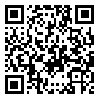2- Department Health Education and Promotion, Research Centre for Social Determinants of Health, Faculty of Health, Ahvaz Jundishapur University of Medical Sciences, Ahvaz, Iran. , hmohamadian@razi.tums.ac.ir
Background: Children belong to the most vulnerable social group. Thus, children’s issues address a substantial part of the security in each community. It was necessary to develop an instrument to screen the children at risk of child abuse.
Methods: This survey was conducted on 200 elementary students of the Ahwaz City, Iran, using a self-report questionnaire. A multi-stage sampling method was used for selecting the samples. The average variances were extracted, and composite reliability along with Cronbach’s alpha coefficient was performed by LISREL for Exploratory Structural Equation Modeling (ESEM) and Confirmatory Factor Analysis (CFA) approaches.
Results: The ESEM results revealed the 8-factor structure that explained 59.47% of the total variance in the child abuse questionnaire. Findings suggested that scaring children address the most factor load (0.97), and the destruction of self-esteem addresses the lowest factor load (0.37) in child abuse.
Conclusion: The Persian version of the 8-factor child abuse tool indicated acceptable psychometric properties. The Persian version of the 8-factor child abuse questionnaire should be considered in developing a research agenda for child maltreatment future studies.
Received: 2019/07/3 | Accepted: 2019/11/15 | Published: 2020/01/1
| Rights and permissions | |
 |
This work is licensed under a Creative Commons Attribution-NonCommercial 4.0 International License. |





